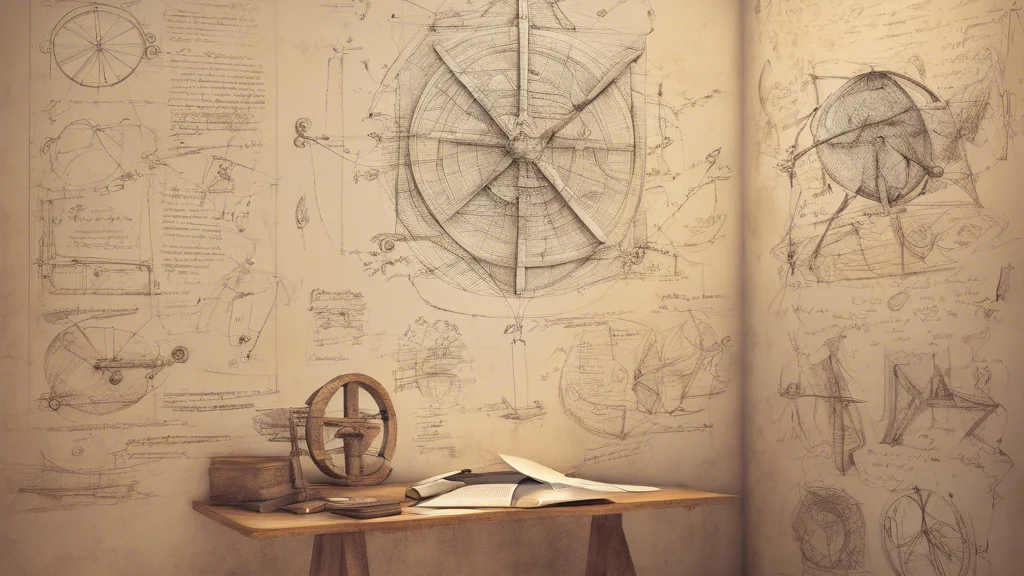To expound on last week's discussion on perspective this week's 3D Thursday Sketch Blog goes on a deep dive into how classical masters like Leonardo da Vinci and Michelangelo Buonarroti wielded perspective tools to elevate their compositions, guiding the viewer through vast spaces and intricate narratives.
Last week, we explored the foundations of perspective. This week let’s step into the timeless world of classical illustration, where visionaries like Leonardo da Vinci and Michelangelo Buonarroti used perspective not just as a technical skill, but as a storytelling device to immerse viewers in grandeur and meaning.
Through their frescoes, architectural sketches, and figure compositions, these Renaissance masters revolutionized how we perceive depth, scale, and spatial relationships in art. Let’s analyze key aspects of their use of perspective and generate visual samples inspired by their techniques.
1. Leonardo da Vinci: The Science of Depth
Leonardo’s fascination with the natural world and mathematical precision shaped his approach to perspective. In "The Last Supper", he masterfully applies one-point perspective, drawing the viewer’s gaze toward Christ as the vanishing point. His architectural studies also demonstrate his deep understanding of linear perspective and atmospheric depth.
🔹 Key Takeaways from Leonardo’s Use of Perspective:
- One-Point Perspective – Guides the eye naturally to a focal subject.
- Overlapping Forms – Creates depth by layering figures and structures.
- Atmospheric Perspective – Backgrounds become softer and lighter, enhancing realism.
📌 Visual Support: A generated image mimicking Leonardo’s perspective technique, showcasing a structured composition with a vanishing point that leads toward a central figure.
2. Michelangelo Buonarroti: The Drama of Space
Michelangelo, primarily a sculptor, infused his frescoes and architectural designs with dynamic foreshortening and extreme depth. His work on the Sistine Chapel ceiling demonstrates a unique manipulation of three-point perspective, making the figures appear sculptural and alive. The grandiose designs of St. Peter’s Basilica further illustrate his ability to command space through perspective.
🔹 Key Takeaways from Michelangelo’s Use of Perspective:
- Dramatic Foreshortening – Figures project out towards the viewer, enhancing depth.
- Three-Point Perspective – Used for extreme angles and grand compositions.
- Spatial Storytelling – Figures are arranged to lead the eye through a narrative.
📌 Visual Support: A generated image showcasing Michelangelo’s foreshortening techniques, depicting a dynamic figure reaching outward with exaggerated depth.

3. Renaissance Perspective in Architecture
Both artists applied perspective not just to paintings but also to architectural sketches. Leonardo’s designs for ideal cities and Michelangelo’s ambitious dome plans reflect a deep spatial awareness, balancing function with aesthetic grandeur.
🔹 Key Takeaways from Renaissance Architectural Perspective:
- Symmetrical Vanishing Points – Used in domes, archways, and plazas.
- Harmonic Proportions – Perspective aligns with human-centric scales.
- Illusory Depth in Interiors – Frescoes extend the perception of space beyond physical walls.
📌 Visual Support: A generated image simulating a Renaissance architectural study, featuring classical columns, domes, and arches receding into perspective.

Bringing Classical Perspective into Your Sketches
By studying Leonardo and Michelangelo, we can elevate our own sketches, whether we’re designing cityscapes, figure compositions, or grand interiors. Try these exercises:
🔸 Master Study – Recreate a section of The Last Supper or the Sistine Chapel using perspective lines. 🔸 Foreshortening Drill – Sketch a reclining figure, exaggerating depth and angles.🔸 Architectural Perspective – Draw an archway leading into a deep corridor.
The 3D Thursday Challenge:
Choose one classical perspective technique and apply it to your own artwork! Share your sketches with me here so we can see your take on Renaissance depth and space.
Stay inspired, sketch boldly, and let perspective lead you into new artistic dimensions!